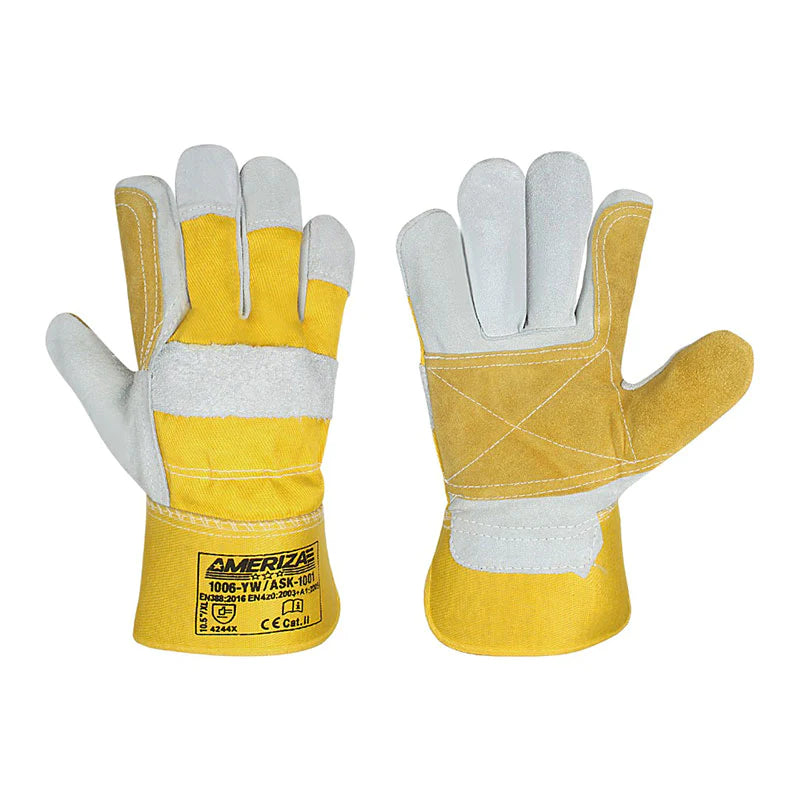The EN 388 standard is a European standard used to evaluate the performance of protective gloves against mechanical hazards. It was introduced in 1994 and has since been updated several times to improve its accuracy and usefulness.
The EN Standard 388 specifies the requirements and testing methods for protective gloves. It covers resistant to mechanical risks, such as abrasion, cut, tear, and puncture. This standard applies to gloves to protect the user's hands against mechanical hazards that can cause injuries. The EN Standard 388 uses a combination of letters and numbers to indicate the level of protection provided by the gloves. The four digits correspond to the levels of protection against abrasion, cut, tear, and puncture, respectively. The higher the number, the greater the level of protection provided.
Testing Process
The testing process for the EN 388 standard involves using a machine to subject the glove material to specific mechanical hazards. The abrasion resistance test involves rubbing the material against a rough surface with a standard weight and measuring the number of cycles required to wear through the material. The blade cut resistance test uses a circular blade to cut through the material with a standard force, and the amount of force required to cut through the material is measured. The tear resistance test involves tearing the material with a standard force, and the amount of force required to tear the material is measured. The puncture resistance test involves measuring the force required to puncture the material with a standard probe.
After testing, each glove is assigned a four-digit code that indicates its performance in each of the four areas. The first three digits indicate the performance in abrasion resistance, blade cut resistance, and tear resistance, respectively, while the fourth digit indicates the performance in puncture resistance. For example, a glove with a rating of 4343 would have a high level of abrasion and tear resistance, but a lower level of blade cut and puncture resistance.
Understanding the Levels of Protection
Let's take a closer look at the four levels of protection provided by EN Standard 388.
- Abrasion Resistance
The first number in the EN Standard 388 rating indicates the level of abrasion resistance. The abrasion resistance test involves subjecting the gloves to abrasive materials to see how much wear and tear they can withstand. The rating ranges from 0 to 4, with 4 being the highest level of abrasion resistance.
- Cut Resistance
The second number in the EN Standard 388 rating indicates the level of cut resistance provided by the gloves. The cut resistance test involves subjecting the gloves to a sharp blade to see how much force is required to cut through the material. The rating ranges from 0 to 5, with 5 being the highest level of cut resistance.
- Tear Resistance
The third number in the EN Standard 388 rating indicates the level of tear resistance. The tear resistance test involves subjecting the gloves to a sharp object to see how much force is required to tear the material. The rating ranges from 0 to 4, with 4 being the highest level of tear resistance.
- Puncture Resistance
The fourth number in the EN Standard 388 rating indicates the puncture resistance. The puncture resistance test involves subjecting the gloves to a sharp object to see how much force is required to puncture the material. The rating ranges from 0 to 4, with 4 being the highest level of puncture resistance.
Testing Requirements
In addition to the mechanical performance testing, the EN 388 standard also requires gloves to undergo tests for dexterity and contact heat resistance. The dexterity test measures how well the glove allows the wearer to handle small objects, while the contact heat resistance test evaluates the glove's ability to protect against contact heat.
Certification
Gloves that meet the EN 388 standard can be certified by a third-party certification body. This certification provides assurance to users that the gloves have been tested and meet the standard's requirements. The certification mark includes the four-digit code that indicates the glove's performance in the four areas of mechanical performance.
Limitations
While the EN 388 standard is a useful tool for evaluating the performance of protective gloves, it does have some limitations. For example, it does not evaluate gloves for chemical resistance, electrical resistance, or protection against biological hazards. It also does not account for factors such as glove size, fit, or durability.
Updates
The EN 388 standard has been updated several times since its introduction in 1994. The most recent update, published in 2016, introduced a new test for impact resistance, which evaluates a glove's ability to protect against impact injuries. Gloves that meet the requirements of this test are assigned an additional letter code (P for pass or F for fail) to indicate their performance.
Conclusion
In conclusion, the EN 388 standard is an important tool for evaluating the performance of protective gloves against mechanical hazards. It provides a standardized way
of comparing gloves from different manufacturers and helps ensure that gloves provide adequate protection to users. However, it is important to keep in mind the limitations of the standard and to choose gloves that are appropriate for the specific hazards and tasks involved.
Check Out Our Most Selling Products

